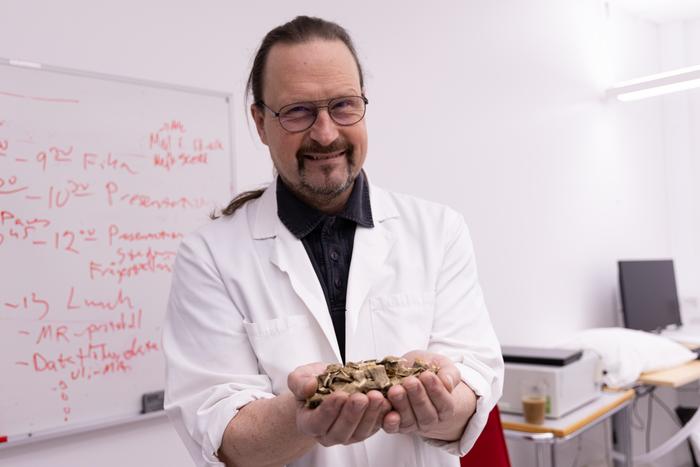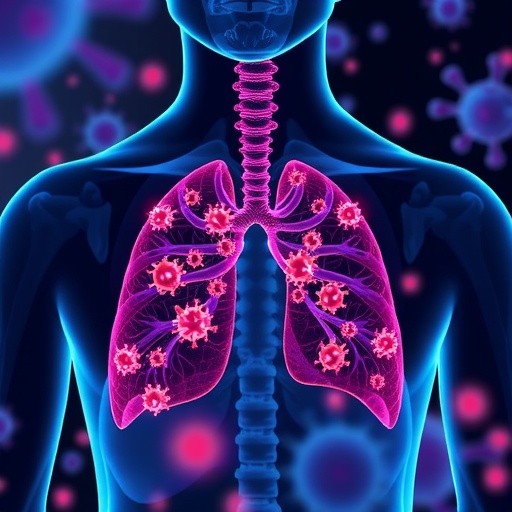Unexpected Cardiovascular Effects Observed After Snus Cessation: New Insights from a Swedish Clinical Study
Nicotine snus, a smokeless product gaining traction in several countries including the UK, the US, and Sweden, has long been recognized for its immediate cardiovascular effects due to the presence of nicotine, an addictive compound known to acutely increase blood pressure and heart rate. However, what remains largely unexplored is the physiological impact on individuals after they cease using snus. A pioneering study led by Professor Fredrik Nyström at Linköping University, published recently in the Harm Reduction Journal, offers surprising findings that challenge previous assumptions about snus cessation and cardiovascular health.
This rigorous randomized clinical trial involved 37 participants aged 18 to 70 years, all initially normotensive and predominantly male, who were habitual users of either tobacco-based or nicotine-only snus products. The study aimed to elucidate the cardiovascular and metabolic changes occurring over a 12-week period after participants discontinued snus use. Biochemical markers such as blood glucose, lipids, and insulin levels were measured at baseline and throughout the study alongside daily home-monitored blood pressure and weight measurements. The comprehensive monitoring provided detailed insights into physiological adaptations linked to snus discontinuation.
Contrary to expectations rooted in previous observational research, the participants who ceased snus use exhibited a clinically significant increase in systolic blood pressure, averaging an elevation of 3.7 mm Hg. This blood pressure rise manifested within the first weeks of cessation and stabilized at this heightened level for at least two months. Equally notable was the average weight gain of 1.8 kilograms among the participants during the follow-up period. Although weight gain is a recognized factor influencing blood pressure, the magnitude observed in this cohort was deemed insufficient alone to explain the unexpected hypertensive response after cessation.
Importantly, the study sheds light on a critical clinical concern: individuals who stop using snus—especially those with pre-existing cardiovascular risk factors—may require diligent monitoring to manage emerging blood pressure elevations. The researchers recommend that healthcare practitioners consider follow-up protocols post-cessation, including routine blood pressure assessments and potential adjustments in antihypertensive medication for susceptible patients. This nuanced approach diverges from the simplistic notion that snus cessation is universally beneficial to cardiovascular health in the short term.
Methodologically, this study distinguishes itself by its prospective design and direct measurement of physiological parameters before and after snus cessation, overcoming the limitations inherent in previous observational studies that only compared users to non-users without temporal context. The daily blood pressure readings obtained through semi-automatic home devices enhanced data reliability by capturing real-world fluctuations rather than relying exclusively on clinical office measurements.
The study population primarily consisted of users of tobacco-containing snus, a product banned across the European Union except for Sweden, and nicotine-only “white snus.” This distinction is critical given the ongoing regulatory and public health discourse surrounding tobacco harm reduction and nicotine delivery alternatives. By focusing on cessation rather than the acute effects of usage, the research informs the complex risk-benefit analysis underpinning policy decisions on snus marketing and availability.
One notable limitation was the unexpectedly high success rate of cessation among participants; 33 out of 37 managed to abstain completely throughout the 12-week period, leaving no relapse group for comparative analysis. This lack of data on relapse-induced physiological changes leaves open questions about the reversibility of observed cardiovascular alterations and the potential cumulative impact of repeated cessation and relapse cycles on vascular health.
In light of these results, future research directions should include larger cohorts, extended follow-up durations, and exploration of underlying biological mechanisms to confirm and expand upon these preliminary findings. Studies evaluating inflammatory markers, autonomic nerve function, and metabolic hormone profiles may elucidate pathways through which snus cessation exerts paradoxical cardiovascular effects. Furthermore, investigating the trajectory of blood pressure if snus use is resumed would provide critical insights for clinical recommendations.
This study adds a layer of complexity to the narrative of nicotine and cardiovascular interaction by demonstrating that cessation, while ultimately beneficial, may precipitate intermediate physiological changes requiring careful management. It calls for a more individualized approach to tobacco harm reduction strategies and cessation support, emphasizing monitoring over assumption. As snus and other nicotine pouch products gain popularity, public health frameworks must adapt to address both the acute and post-cessation cardiovascular risks.
Given the global rise in nicotine product usage and the push towards alternatives perceived as safer than combustible tobacco, these findings serve as a critical reminder of the intricacies involved in addiction cessation and metabolic regulation. Health authorities and clinicians are advised to interpret snus cessation benefits with nuance, ensuring that cessation programs incorporate cardiovascular health surveillance to mitigate unforeseen adverse effects.
In conclusion, the Linköping University team’s research unearths a paradoxical hypertensive response following snus cessation, accompanied by modest weight gain, underscoring the need for tailored clinical follow-up. By unveiling this unexpected physiological phenomenon, the study paves the way for enhanced understanding of nicotine’s multifaceted impact on human health beyond immediate consumption effects.
Subject of Research: People
Article Title: Cardiovascular and metabolic changes following 12 weeks of tobacco and nicotine pouch cessation: a Swedish cohort study
News Publication Date: 16-Apr-2025
Web References: https://doi.org/10.1186/s12954-025-01195-y
Image Credits: Johan Sjöholm / Linköping University
Keywords: Snus cessation, nicotine, blood pressure, hypertension, cardiovascular risk, weight gain, tobacco harm reduction, clinical trial, metabolic changes, nicotine pouch, nicotine withdrawal, public health
Tags: blood pressure changes after snuscardiovascular effects of quitting snusclinical study on snus usersharm reduction in tobacco useinsights from Swedish snus researchlong-term effects of nicotine snusmetabolic changes after quitting smokeless tobaccomonitoring health post-snus cessationnicotine withdrawal symptomsphysiological impact of snus cessationrandomized clinical trial on snussnus cessation and weight gain





